You always meet twice in life, and with the new Domain, RockShox are reintroducing a classic. At first glance, the RockShox Domain with its burly 38 mm stanchions is very similar to the ZEB, but it relies on other materials and simpler damping technology to bring down the price. Can it increase confidence on your eMTB and make for a worthwhile upgrade?
The moment you see it, it’s clear: the new Domain is a burly fork for eMTBs. Like the ZEB, the stiff chassis relies on 38 mm stanchions. Both the 29″ and the 27.5″ versions of the fork are available with travel ranging between 150 and 180 mm. The fork can be ridden with tires up to 2.8″ wide, provided you’re not using the mudguard. Like the ZEB, there’s an optional mudguard available for the Domain that gets bolted to the arch. The € 23 fender is made of plastic and conforms perfectly to the arch so there’s no rattling on the trail. The Domain is available with two different steerer tubes, but the standard 1.5″ tapered version is the only model relevant to us. The 1.8″ tapered version is available exclusively to manufacturers, requiring a special head tube and headset. RockShox opted for the stealth version of the axle, and while this reduces the weight, it can only be removed with an Allen key.
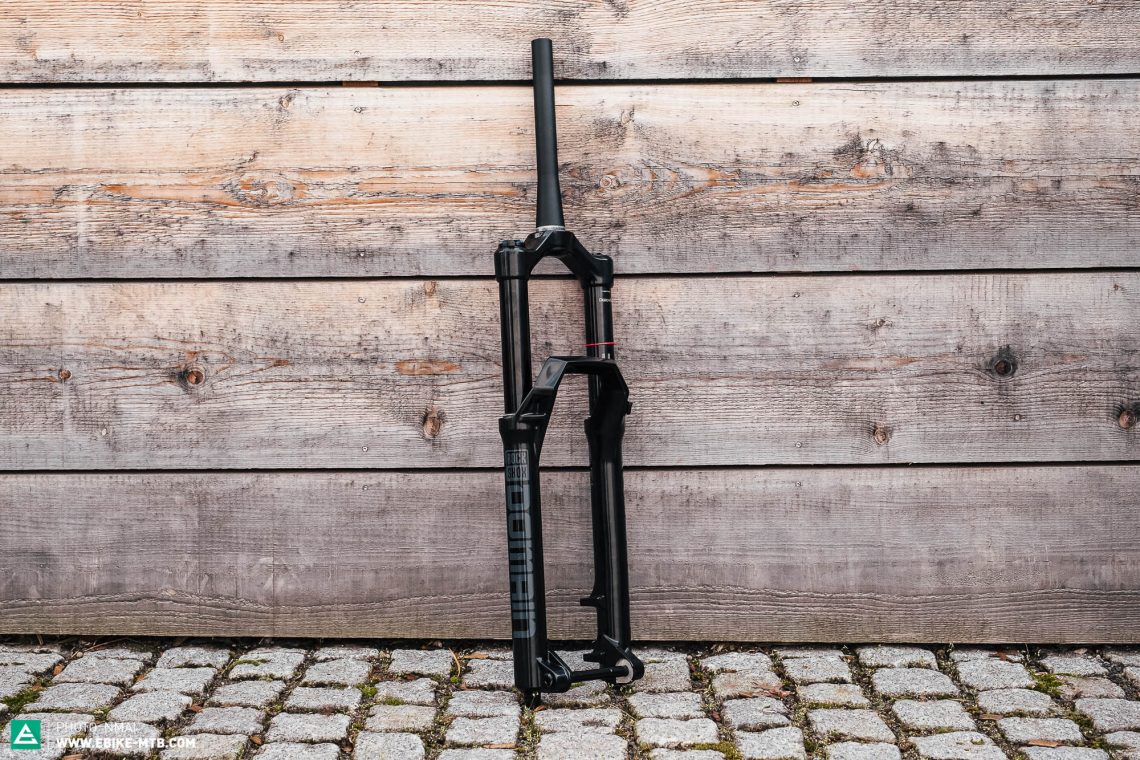
Like RockShox’s flagship forks, the Domain features a DebonAir air spring, allowing quick and easy adjustment to suit the rider’s weight. The progression can be adapted to individual riding styles in no time by adding or removing volume spacers. The Domain RC relies on the Motion Control damper, allowing you to adjust the low-speed compression and rebound. Thanks to the turtle and rabbit symbols, RockShox make adjusting the rebound easy to understand. If you want the fork to rebound faster, turn towards the rabbit. If you want more control and a slower rebound, turn towards the turtle. The hird-hitting 38 mm fork weighs 2,544 g, around 500 g heavier than the 35 mm Yari and almost 300 g more than the higher-end ZEB. It will be available from July 2021 for € 594 RRP.
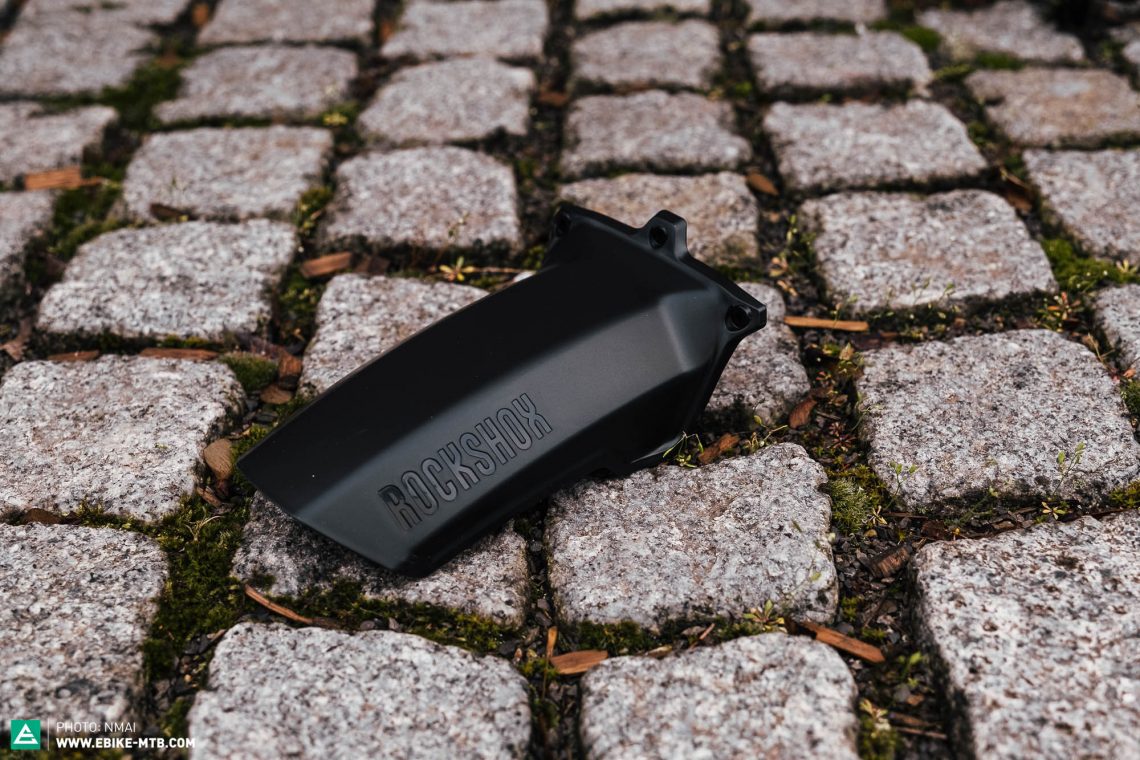
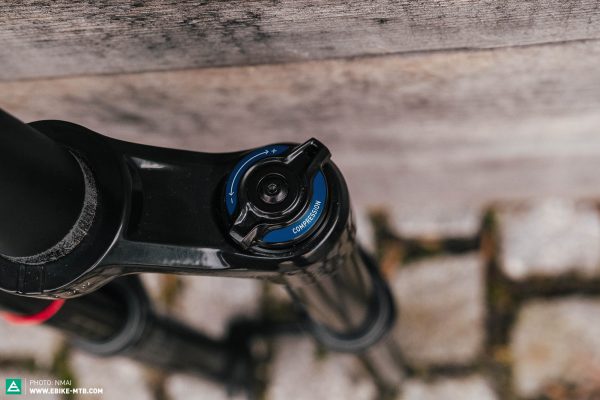
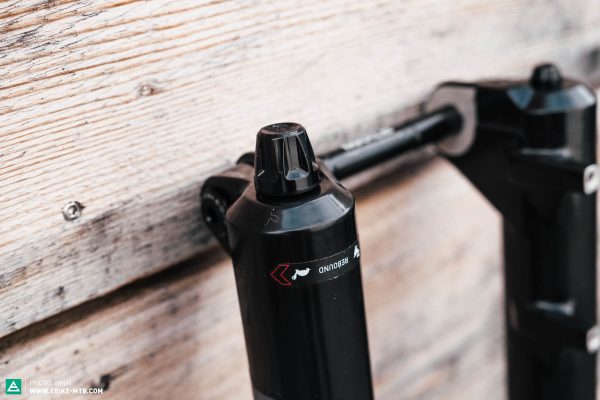
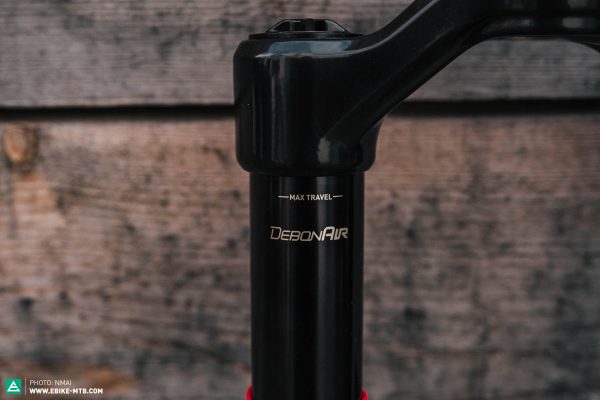
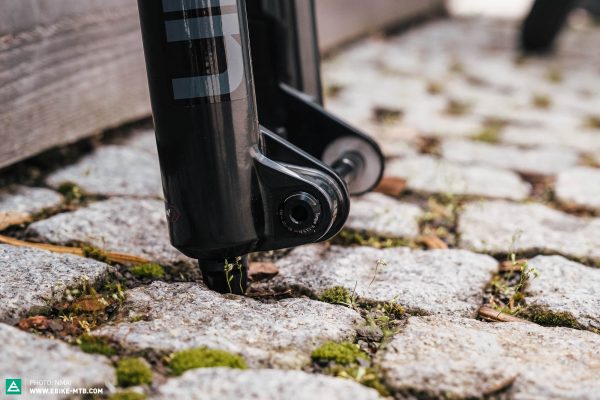
How to set up the new RockShox Domain
The Domain is simple to set up due to the limited adjustment options, and the TrailHead app, the table listing rider weights and corresponding settings on the fork legs and the SAG markings on the stanchions are very user-friendly. Let’s take a look at which setup options are available. For the basic settings, simply enter the serial number on the fork crown into the TrailHead app.


If you click on “Tuning” in the app or browser, you will be redirected to the setup page. You can select your weight and the bike category on the setup page, based upon which the app will give you a personalised setup suggestion. Alternatively, you can use the table printed on the fork leg to find the appropriate pressure setting for your weight. The table recommends adding 10 psi if you’re riding an ebike, but we’d bump that up to 15 psi instead.
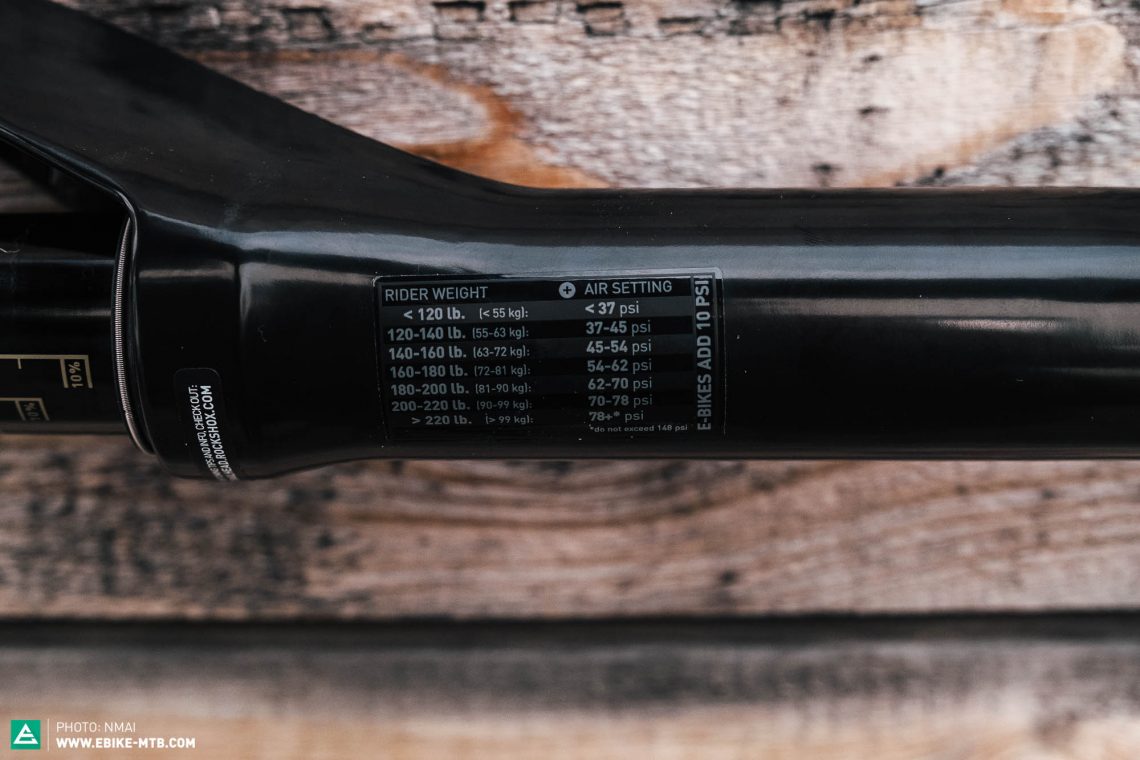
The fork comes equipped with the entry-level Motion Control RC damper.
Only the low-speed compression is adjustable. We’d advise initially turning the compression dial 2–3 clicks clockwise in the “+” direction to activate the damper, or you won’t make effective use of the fork’s travel. However, you’ll quickly feel it in your hands if you turn it too far in the “+” direction. The rebound can be adjusted using the Dual Flow rebound dial on the bottom of the fork and the TrailHead app will give you a suggested setting. To set the rebound, close the dial all the way, turning in the direction of the turtle, then turn it in the direction of the rabbit and count the clicks until you reach the number of clicks suggested for you. If you’re still not satisfied, take your time to play around with the setting to find what’s ideal for you. In general, if it is too slow, you’ll feel a lack of pop and the slow rebound doesn’t allow the fork to recover from impacts quick enough. If it’s set too fast, the front wheel won’t track as well and pass blows directly to your arms.
Using the RockShox TrailHead software in the app or your browser, you can see how many tokens, i.e. volume spacers, are installed in the fork by clicking on “Fork Info”. In case you’re unfamiliar with volume spacers, they increase the fork’s progression towards the end of the travel and thus avoid bottoming out on hard landings. As a result, the travel can also be used more effectively since the spring characteristic changes and the fork can be ridden at lower pressures without increasing the risk of bottoming out. If you’re still bottoming out, we recommend adding another volume spacer. However, if you’re only using about 3/4 of the fork’s travel on the roughest trails, it might be better to remove a volume spacer so that you can make use of all the available travel.
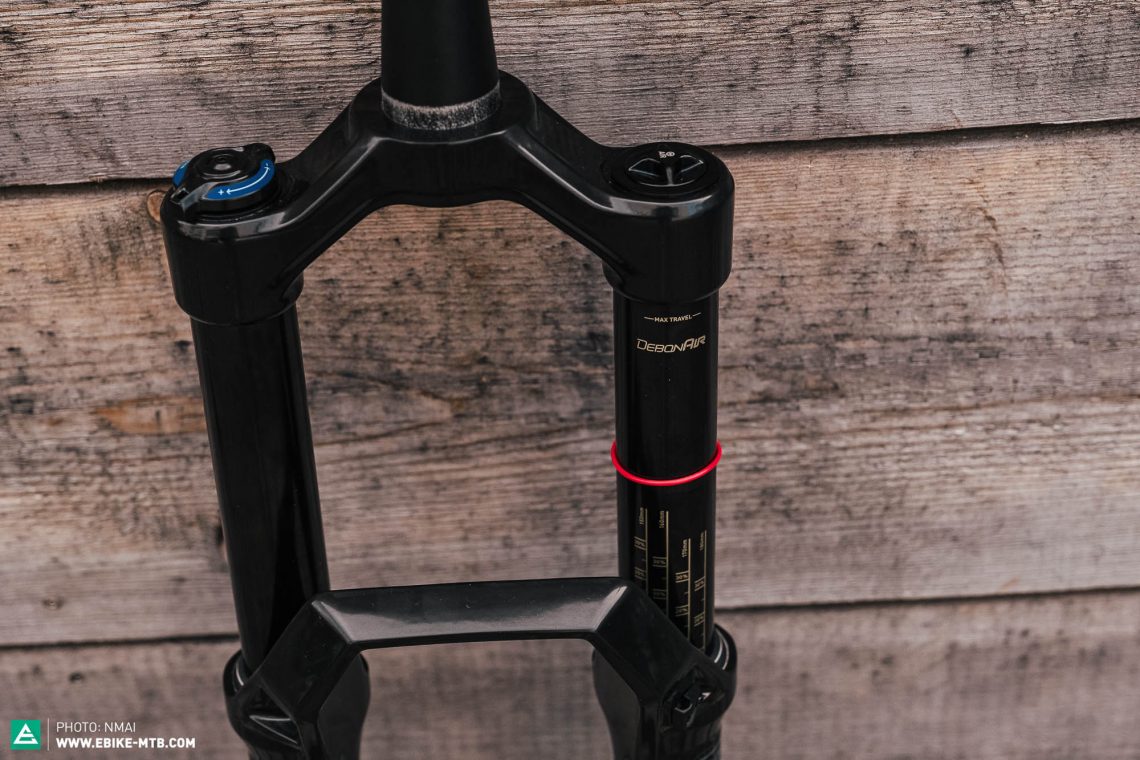
The Domain on the trail
Due to the oversized crown, the transition between fork and head tube looks well-proportioned. With its 38 mm stanchions, the Domain is made for eMTBs and thus one of the few forks that don’t look out of place on a modern eMTB, promising a high level of stability and rider confidence. When riding fast, on flow trails, through berms and compressions and over high-speed jumps, you’ll quickly notice the advantages of the fork’s massive chassis. The front wheel goes precisely where you point it. For active manoeuvres, such as when pumping the bike through rollers or trying to pop off a lip, the fork lacks support, especially mid-travel. You might want to increase the compression damping for this kind of riding. It has more than enough reserves to deal with hard hits when you send to flat, off big drops and over big jumps. However, the downside of this setup reveals itself on natural and rough trails. In that case, the Domain passes even small impacts from roots and bumps on to your hands. With less compression damping, grip and comfort are noticeably increased. However, the Domain then sags excessively on steep descents and remains low in its travel. The fork also sinks far into its travel under hard braking, dropping the front end and robbing the rider of confidence. Unfortunately, we had to determine already on the first meters an annoying rattling with smaller blows on our “pre-series fork”. According to RockShox, this is a too soft spring between the shimstacks in the rebound damping. This problem should be fixed according to RockShox in series production.

RockShox ZEB vs. RockShox Domain
To give you the most accurate review possible, we compared the fork with a ZEB R. The ZEB might be the higher-end version of the Domain, but the model we tested doesn’t allow you to adjust the compression setting of the Charger damper. Can the generally higher-quality Charger internals score nonetheless? The Domain relies on some of the same high-quality technology as the coveted ZEB enduro fork, but you have to accept a few compromises in certain areas that help keep the price where it is. For example, the Domain uses lower-quality bushings and the stanchions are made of heavier 6000-grade aluminium. The fork crown is cast instead of being machined as with the ZEB, also increasing the weight. There are apparent differences in the setup as the rebound of the ZEB offers significantly more clicks for more accurate tuning. The air pressure also differs between the ZEB and Domain.
| Yari | Domain | ZEB | |
|---|---|---|---|
| Stanchions | 35 mm | 38 mm | 38 mm |
| Weight | 2,050 g | 2,544 g | 2,256 g |
| Price | € 539 | € 594 | € 759 |
We would like to refer to the table above to explain the rough differences between the Yari, Domain and ZEB, which are forks you’ll likely see on an eMTB. The 35 mm Yari quickly reaches its limits due to its skinny chassis, especially on rough trails. The responsiveness of the two 38 mm forks is similar, but the ZEB remains significantly higher in its travel than the Domain and thus instils the rider with more confidence, especially when things get steep. The Charger damper in the ZEB makes it feel easier to get airborne on fast, flowing trails. Both forks are similarly progressive towards the ends of their travel and we didn’t bottom out once with either of the two forks. All said and done, the performance of the Domain is entirely sufficient for beginners while also being easier on your wallet. On the other hand, the ZEB R offers the performance of a high-end model despite limited adjustability, which is particularly beneficial for more demanding riders and does the higher price point justice.
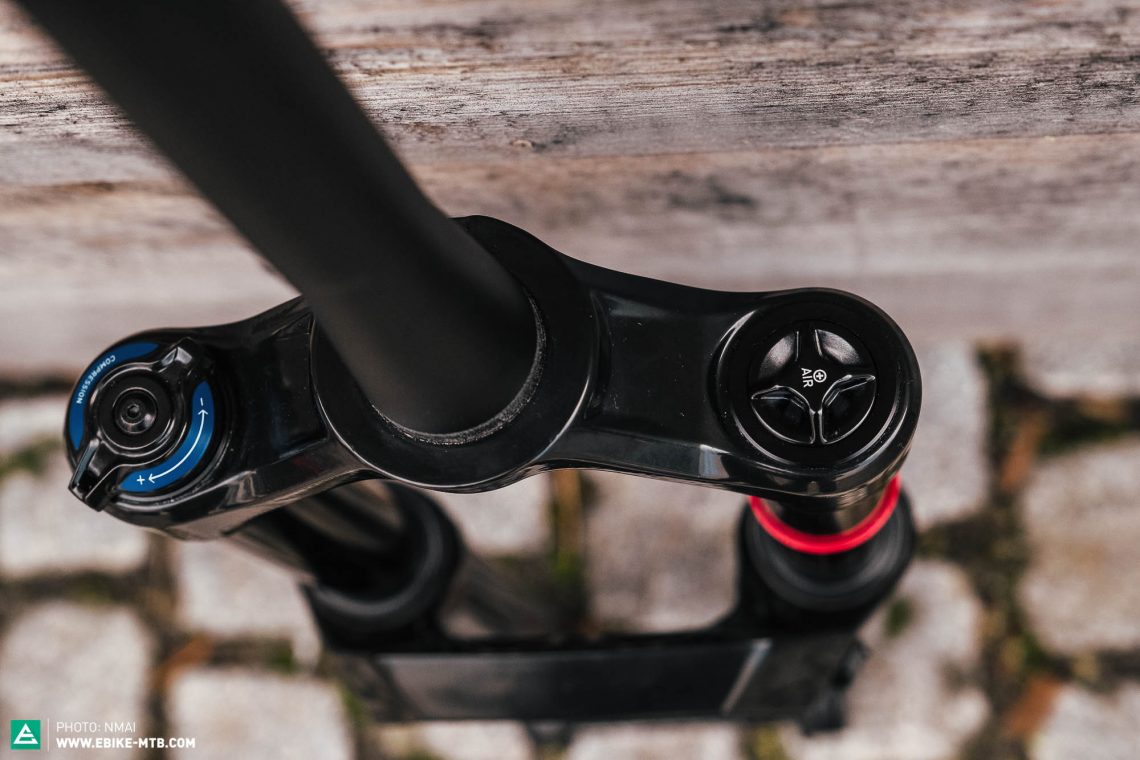
Does RockShox’s budget fork concept work?
With the Domain, RockShox are offering an attractively priced alternative to the ZEB. The simple damper makes setting the fork up relatively easy and doesn’t overwhelm beginners. But if you’re going to ride both flowing trails and rough singletrack, you’ll have to adjust the air spring pressure to suit the terrain. Since weight doesn’t play a significant role on an eMTB, the savings from the slightly heavier fork crown and lower legs are a sensible way to lower the price. The Domain can make for a good upgrade if you have a “skinny” fork such as a Yari or Pike fitted to your eMTB.
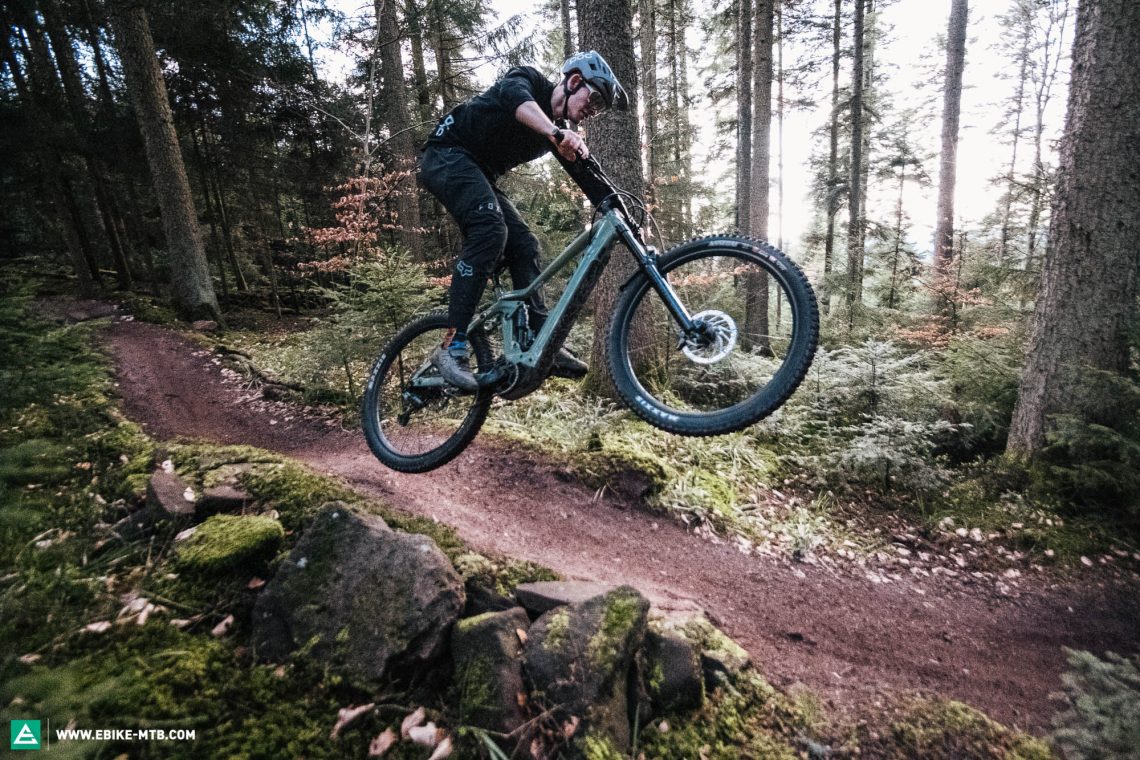
Conclusion
The Domain is back and it’s better than ever. Based on the ZEB’s thick 38 mm stanchions, the Domain offers plenty of reserves and a lot of stability on the trail. The damper works well for flowing trails. However, it reaches its limits in steep and rough terrain. To keep the price attractive, RockShox cut costs sensibly, relying on lower grade materials for some parts. Overall, the Domain is a good option for beginners and a solid entry-level fork for less than 600 Euros, offering eMTBs added reserves and stability.
Tops
- 38 mm stanchions offer a lot of stability and stiffness
- very progressive and offering lots of reserves
- Price
Flops
- entry-level damper
- stays low in its travel
- our pre-production model rattles
You can find out more about at sram.com/rockshox
Did you enjoy this article? If so, we would be stoked if you decide to support us with a monthly contribution. By becoming a supporter of E-MOUNTAINBIKE, you will help secure a sustainable future for high-quality cycling journalism. Click here to learn more.
Words: Photos: Nils Mai, Thomas Weiß









